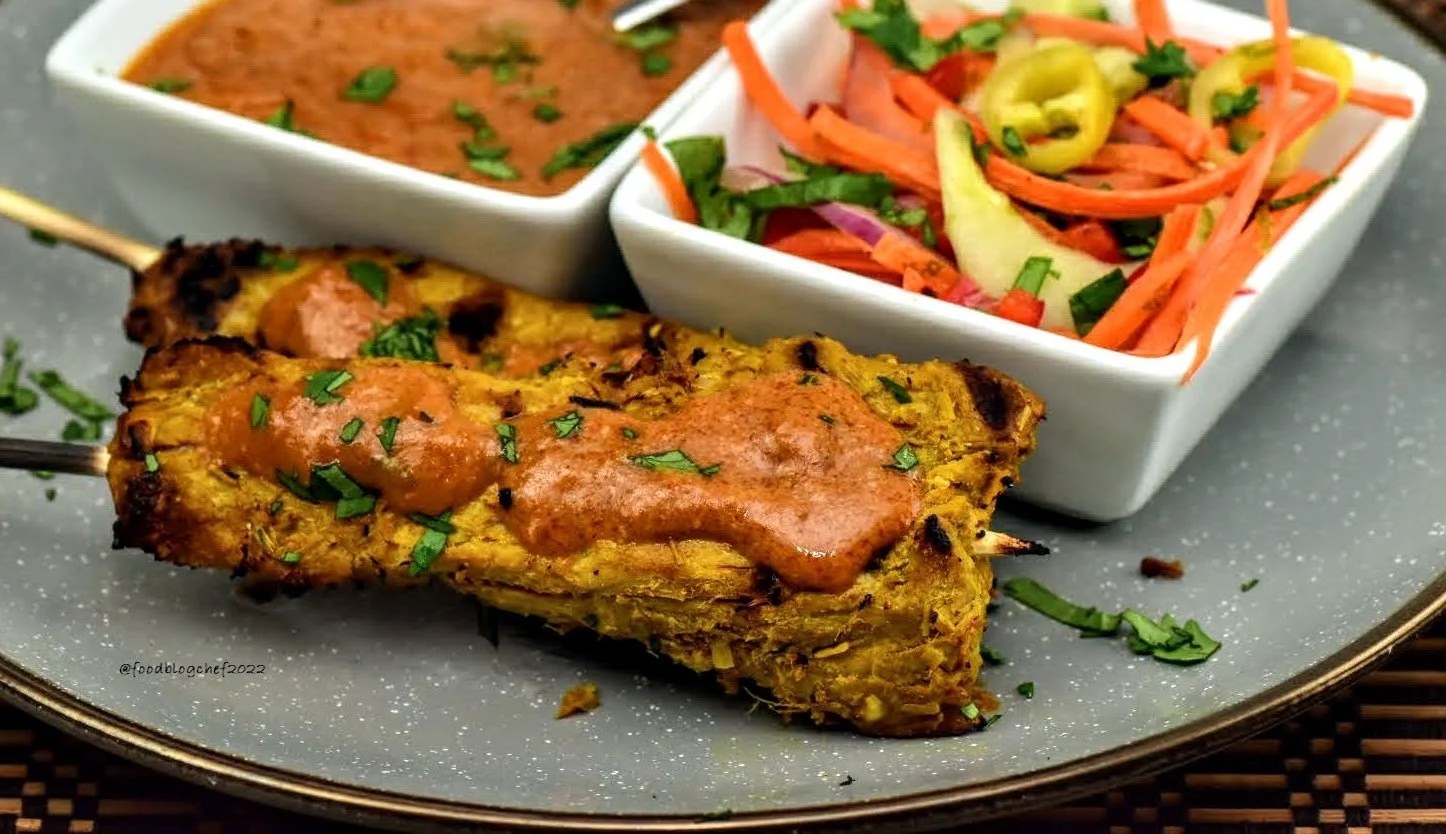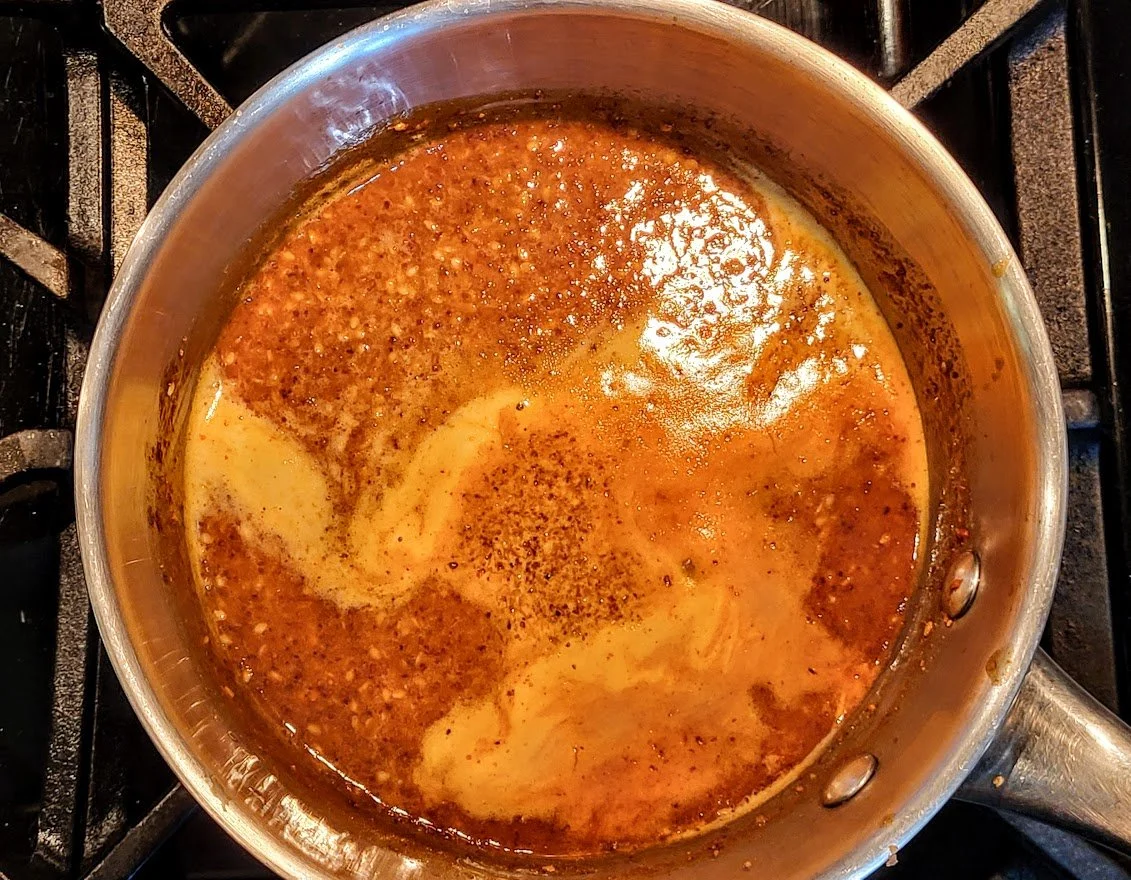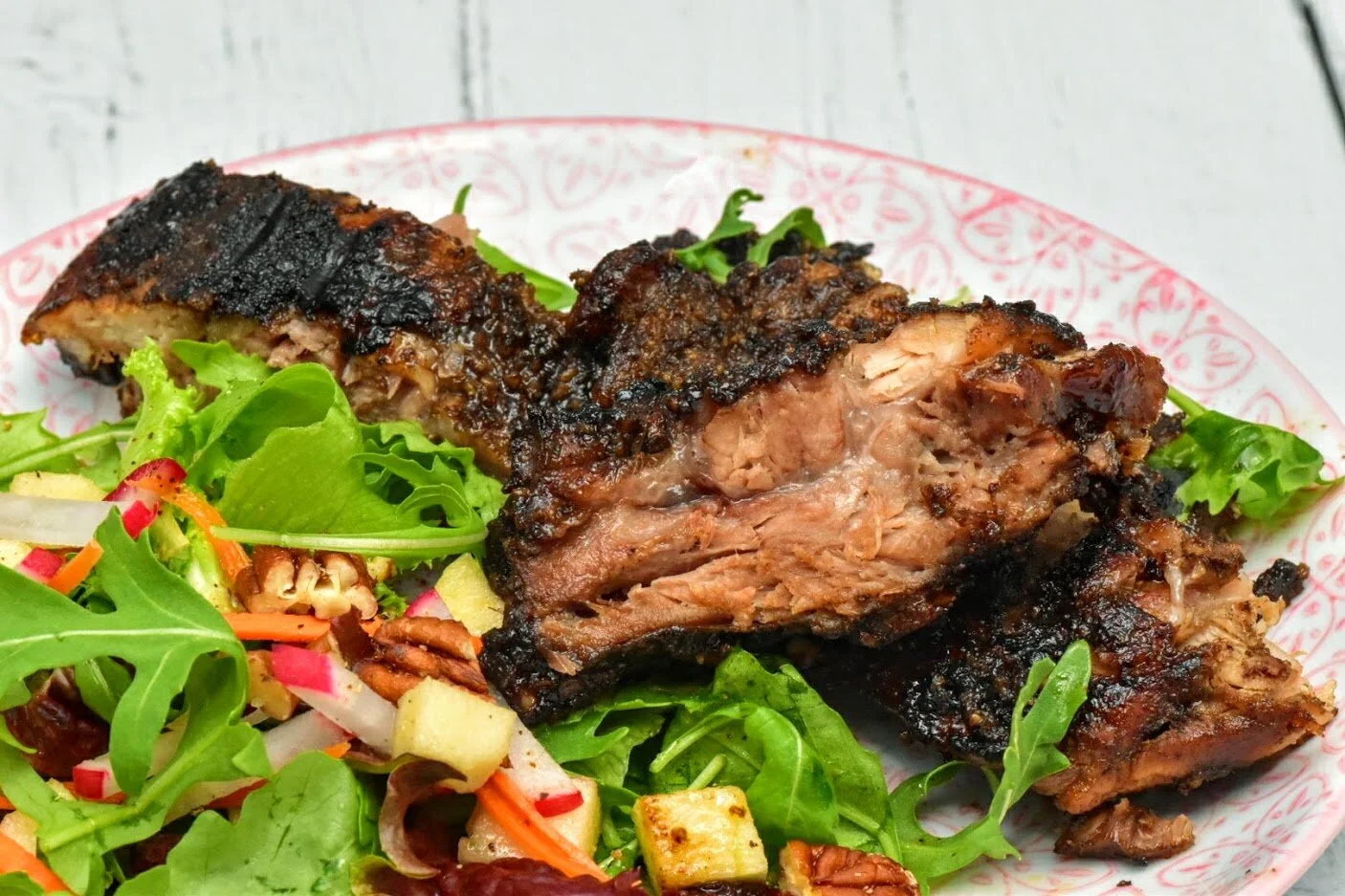Thai Pork Satay with Peanut Sauce →
Now ubiquitous at catered events in Europe and the United States, satay (marinated, skewered grilled meat often accompanied by a spicy peanut sauce) is a favorite traditional dish throughout all the countries of Southeast Asia. Myanmar, Laos, Vietnam, Thailand, Malaysia, and Indonesia all have their own versions of satay with regional variations within each country. I was first introduced to satay when I lived in Bali; pork, chicken, and sea turtle satay are all common street food delicacies in Indonesia. While in Southeast Asia, I also had the opportunity to sample Malaysian and Thai satay. Each is wonderful with flavors that reflect popular local spices and cooking practices. For example, one difference between Thai or Malaysian satay and Indonesian satay is the use of coconut milk. I happen to love spicy sauces that use coconut milk, so I offer this recipe for Thai Pork Satay adapted from https://hot-thai-kitchen.com. Palm sugar, galangal, tamarind paste, lemon grass, fish sauce, and kekap manis (sweet soy sauce) are all important ingredients in authentic traditional Southeast Asian cooking. To develop this recipe, I substituted ingredients common to American and European kitchens for some of the less readily available ingredients commonly used by cooks in Southeast Asia. I believe the results stay true to the flavor of the original authentic recipe. I hope you enjoy it. (*Note: unfortunately anyone who is allergic to peanuts or sesame seeds should avoid this dish.)
Thai Pork Satay with Peanut Sauce
Serves 4
MARINATE THE PORK
Ingredients:
1 ½ pounds pork tenderloin, loin, or shoulder (I used pork tenderloin; you could also substitute chicken for the pork)
1 shallot, minced
2 cloves of garlic, minced
1 tablespoon grated ginger
3 tablespoons chopped fresh lemongrass (tough outer skin removed)
¾ teaspoon ground cumin
¾ teaspoon ground coriander
1 ½ teaspoons turmeric
¼ teaspoon cayenne
1 tablespoon fish sauce
1 tablespoon lime juice
2 teaspoons soy sauce
1 tablespoon brown sugar
½ cup of unsweetened coconut milk
Preparation:
Slice the pork into thin rectangles (approximately ¼ inch thick by 1 inch wide by 4 inches long and set aside.)
Process the ingredients for the marinade in a food processor for 1-2 minutes until semi-smooth.
Pour the marinade into a large bowl and add the reserved sliced pork and mix to coat the pork.
Cover and refrigerate for at least 2 hours, preferably over night.
While the pork is marinating make the Peanut Sauce. (Can be made a day ahead and refrigerated.)
PEANUT SAUCE
Ingredients:
2 tablespoons Thai red curry paste (available at supermarkets or Asian specialty stores)
1¼ cup coconut milk
½ cup roasted peanuts (or 1/3 cup natural peanut butter)
2 tablespoons toasted white sesame seeds (recommended; or substitute 2 tablespoons more peanuts)
1-2 teaspoons fish sauce
1 tablespoon sweet soy sauce (kekap manis available in Asian specialty stores)
1 tablespoon grated ginger root
2 tablespoons brown sugar
2-3 tablespoons lime juice
Preparation:
In a food processor, grind the peanuts into a fine meal. If using sesame seeds, grind them into a fine meal using a spice/coffee grinder or a mortar and pestle, being careful not to over grind them into sesame butter.
In a small pot over medium heat, reduce ¼ cup of the coconut milk by about half. Add the curry paste and cook over medium low heat, stirring constantly, for about 2 minutes until it is very thick. If it thickens too quickly, add a splash of coconut milk to help loosen it up.
Stir in the rest of the ingredients and simmer for a few more minutes until it has thickened into a dip consistency, stirring frequently to prevent the bottom from scorching.
Taste and adjust seasoning with more sugar, fish sauce, and lime juice as needed. If the sauce is too thick, you can thin it using coconut milk or water adding a tablespoon at a time, stirring until you reach your desired consistency. If you thin it too much, you will lose some of the flavor of the sauce.
Assemble the skewers:
Soak 24 bamboo skewers in water for 2 hours before using.
Remove excess marinade from each slice of pork as you skewer the slices lengthwise.
Preheat your grill to hot.
Oil the grate of your grill and place the pork-skewers with the ends of the skewers away from direct heat.
Grill 2-3 minutes per side.
Serve with the peanut sauce on the side and garnished with chopped cilantro or basil for garnish.
Serve with rice and Thai Cucumber Carrot Salad.
Wine pairing: a dry Riesling, Viognier, Gewürztraminer, or Chenin blanc will stand up to the spice in this dish.
Adapted from: https://hot-thai-kitchen.com/satay-and-peanut-sauce






